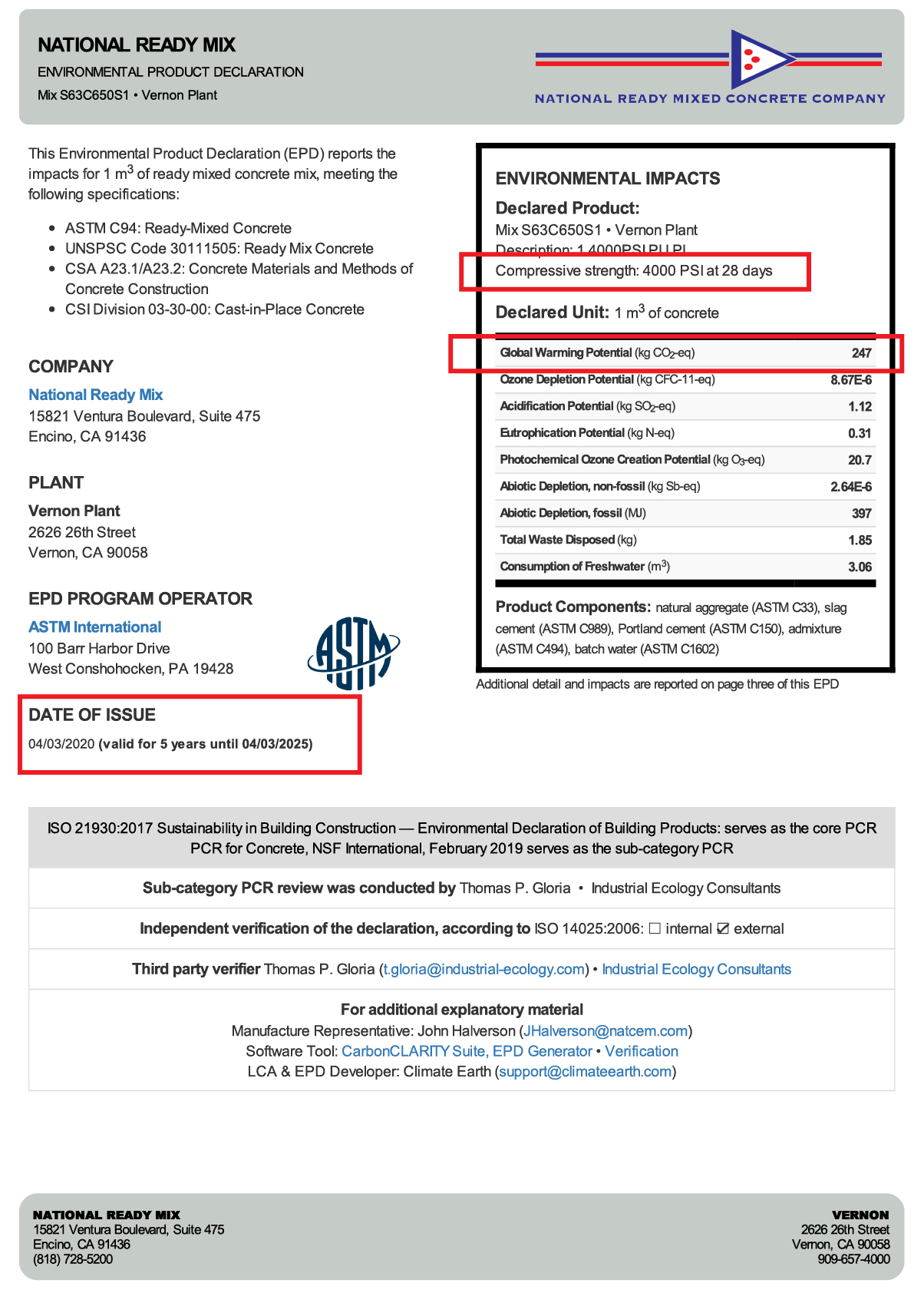AEC Resources
EPD Guide
EPD Guide
Climate Earth receives a lot of questions about how to read an EPD and how to compare EPDs.
This five-step guide below walks you through the process to ensure you are reading the EPD correctly and gives you the knowledge of how to accurately and fairly compare EPDs, even if they come from different EPD producers.

Ensure the compressive strength of each mix are equal and that mixes you are comparing are all designed to perform the same function (they must meet the same structural and constructability requirements).
Note the GWP (Global Warming Potential). This is the measure for embodied carbon and the key metric for comparing your mixes.
Is the EPD published before or after February 19, 2019? If before, the EPDs are not comparable. Ask the supplier to reissue the EPD under the current product category rules.

Check for the uncertainty in the EPDs impacts. EPDs that use the PCA industry average cement data (as required by the PCR if manufacture specific data is not available) will have a higher uncertainty than EPDs using manufacture specific cement data. The potential variability of impact results is +/-39% in this example. An EPD using manufacture specific cement data will not have this variability calculation but rather state “This EPD was calculated using manufacture specific cement data.”
Review the primary sources of LCI data. This list should be the same in each EPD and use the default data sets required by the PCR unless manufacture specific data is available. EPDs using manufacture specific cement are easy to spot. In the example you can see under Portland cement “Industry average EPD” which will state “manufacture specific” if this cement data was used.
EPD Guide
Download our five-step guide on how to read a ready mix EPD
